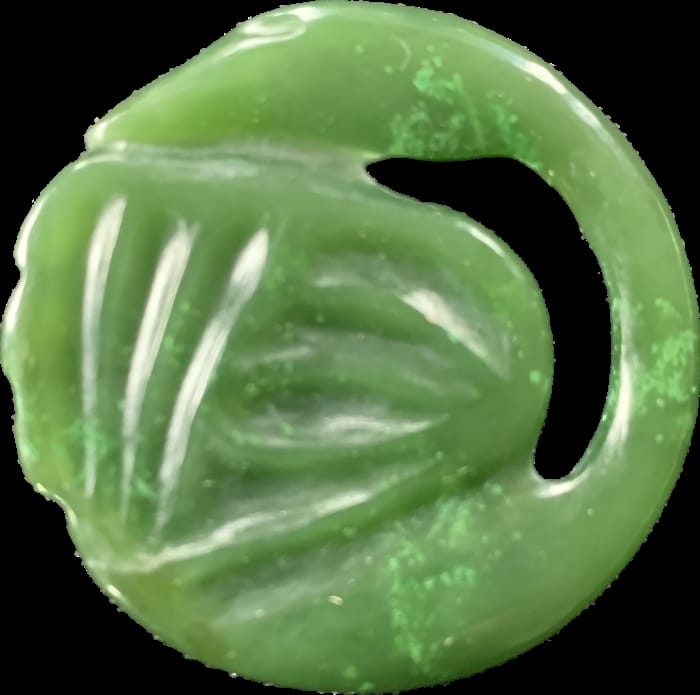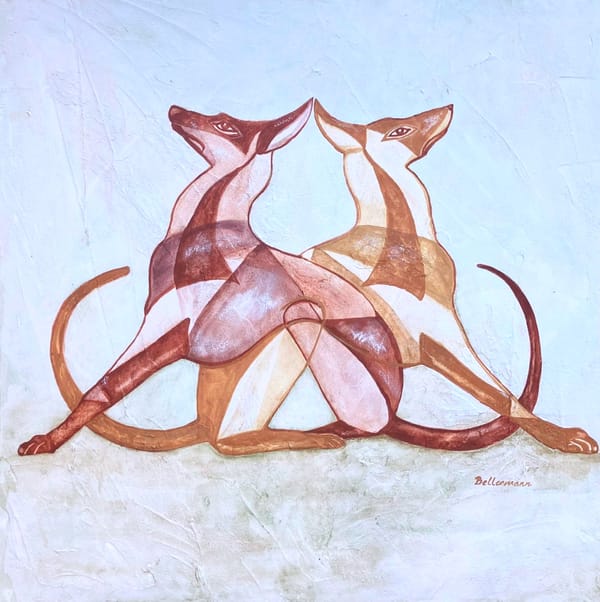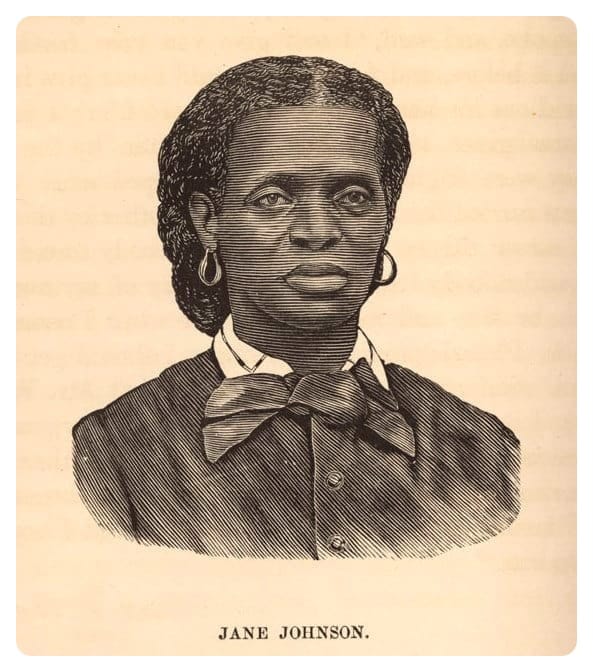The Goddess
Today we discuss how the Goddess represents feminine power and spirituality, but how society has repressed Her image and the fundamental aspect of Her femininity in the world. I describe the Heroine's Journey as the stories we tell ourselves about reclaiming the power of the Goddess.
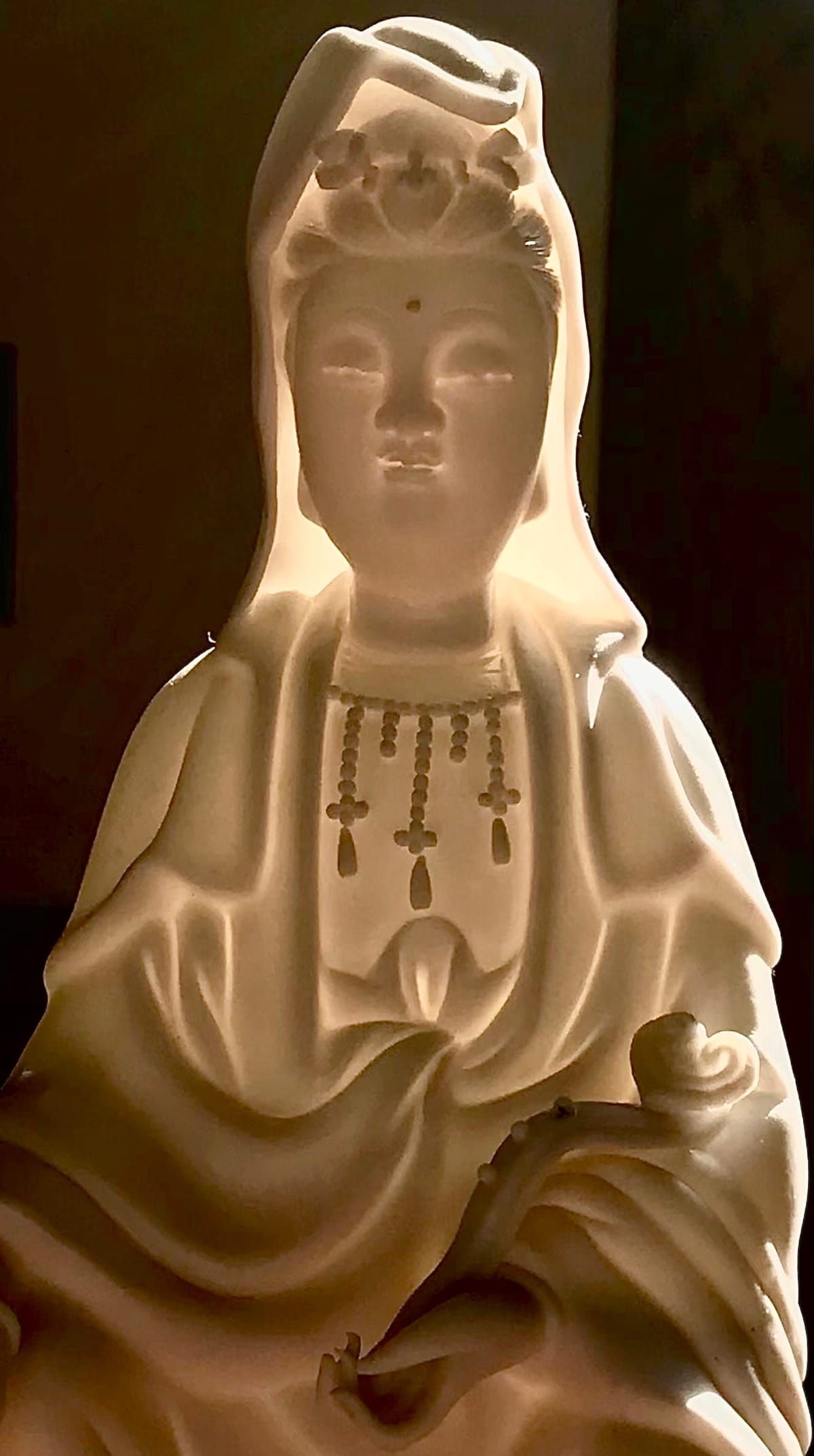
The power was in you all along...
Please scroll down for links below the transcript. This is lightly edited AI generated transcript and there may be errors.
Eric 0:08
Okay. Friday, November 10th. This is episode ten. Hi, Josh.
Dr. Josh Stout 0:13
Hi, Eric. How you doing? So today is about the goddess and the heroine's journey, and we're looking at how basically many religions started off with a sort of unitary understanding of the spiritual world, which then broke into some sort of duality, a sort of yin and yang became the various gods and goddesses, and that we've now sort of left that kind of conception of, of of cosmology behind. So originally in the Paleolithic, the female portion of that duality was much, much stronger. We see in Shiva Cave, the goddess is formed by a unity of the Minotaur and the lioness. And that duality she was representing both male and female power. But the female power was primary in that arrangement so that it isn't a lot of males and a little bit of females. It's lots and lots of females and a little bit of male. And that was what primary power was seen as is. So the the lionesses were hunting power and the male image was a sort of single aspect of that because they understood that the male was also important. And we sort of turned that kind of arrangement on the head, on its head. The main figure you see in the Paleolithic is the Venus figures, these voluptuous women with large hips, large breasts, and they far outnumber any any male figures. They probably were not some sort of universal culture that had spread everywhere but were derived over and over again. So much like hand axes were worldwide or celt, the ground stone celts were worldwide. You could find a celt in New Guinea, you could find a celt in Mesoamerica.
Eric 2:10
What is a celt?
Dr. Josh Stout 2:11
Just a ground stone axe head. They all look the same no matter where you are because they have a particular use. Venus figures were similar in that they're representing the voluptuous female deity and their universe. You're seeing.
Eric 2:23
These these, these rose around the world wherever humanity was.
Dr. Josh Stout 2:28
And started making things. Symbols came out, these symbols came out. So I'm not thinking that there was some sort of a religion that spread around the world and produced these figures, but rather that humans being humans, we have certain ways of doing things. And the same ideas come out over and over again. And so the Venus figures are in many ways universal. And partly this is because of simply biology. So many smart, long lived creatures have what are known as female bonded systems where you have related females and then the male coming in from the outside, for example, lionesses, right? So lionesses are all related and the male is coming in from outside unrelated just to avoid any kind of incest problems. And it means that the females work together on purpose because they're all sisters. And so there's many female bonded systems that end up with very strong matriarchal leaders of groups. For example, whales or elephants. Long live matriarchs lead the herd, teach the younger ones how to do everything, and are the center of essentially the power. The males might be part of that group or they might be coming in from the outside periodically, but they're often much more on their own and a different kind of figure. So the the females are the the essentially what brings the society together and unifies them. And so this is why I think that the goddess figures were so important universally and were understood as the essence of where, where, where culture came from. In the Western tradition, the goddess was represented as a goddess of love and fertility. We see this in Babylon, Sumeria, with Inanna switching to Ishtar. A starts in the Assyrian religions, and then to Venus in Greece and Rome and so these are these are forms of the goddess. There's other forms the goddess can take other than just love and fertility.
Eric 4:29
What you're what you're drawing here is a straight line.
Dr. Josh Stout 4:32
A straight line. One God becomes one goddess becomes.
Eric 4:35
Historic times to record it.
Dr. Josh Stout 4:38
It's hard to know exactly how you get from 10,000 years ago to 5000 years ago. There's a bit of a gap there. But if you look during that time, Venus figures never stop appearing and they become a named goddess that we can read about as soon as we get writing under under the Babylonians. And so they tell us what they were writing about. It's not just we imagine it before the Babylonians. We're kind of imagining what these figures are. After the Babylonians, we have written language and we know exactly what they are. And so they are goddesses, gods, goddesses of of love and fertility different from, say, the Earth, Gaia or Demeter nature itself. Those are other aspects of the goddess. I'm not denying that. Those are aspects of the goddess, but I'm mostly focusing on these love and fertility represented by these. The Venus figures, as they're called. The symbol was the star Venus or the planet Venus. So the brightest star planet people wouldn't really have known. The difference was Venus. And so it was the ruler of the heavens. Originally, she was a war goddess with her symbol being the owl. So later we see.
Eric 5:45
Venus was a war goddess?
Dr. Josh Stout 5:48
Well, Ishtar Inanna was a war goddess in very warlike Sumerian, you know, Assyrian culture. And so she was a war goddess, and she her symbol was the owl. So later we see this in in Greek mythology, where the war goddess becomes Athena Minerva, with her symbol being the owl and gets separated from Venus. And so Venus starts being separated from this idea of technology and war and wisdom.
Eric 6:18
When does this happen?
Dr. Josh Stout 6:19
In classical period. So this is this is this is this is this is under under Greece. Okay. But but Venus still has this idea of being on the moon and Venus that the planet and being a powerful symbol of fertility. Venus can still start the Trojan War. So there's still a warlike aspect to her. You know, she's she's the reason that everyone has to go and destroy Troy and get Helen. And so there is absolutely that aspect to it. But in the Trojan War, they talk about the conflict between Athena and Venus. These are these are two sides of the goddess in conflict. And you can see these symbols as as as really, really different. So the male symbol is the sun. The sun is constant and the sun is brutal. At nighttime in the desert, the moon comes out. It's much more peaceful. It's it's much more forgiving. It's it's a it's sort of a blessing. And then when the sun goes down, but the moon and the Venus, they move around through the sky much more than the sun does. They're there they go and they come back. They disappear periodically. They're they're very different kind of thing than the sun is. The sun is constant and brutal. Whereas the the the moon and Venus are changeable and and much more forgiving.
Also, people must have noticed that there was a relation between human fertility cycles and the moon's cycle. Right. These were these were very similar periods of time and seem to be linked. And so people would have very directly connected human fertility with what they were seeing happening in the in the celestial world.
While Venus figures were common, the male figures in the early part, apparently the Paleolithic times would have been rare to nonexistent. One of the few examples is the the Leuven mentioned the Lyon man, and he's a Lyon headed figure with a man's body. And this would be sort of a rare example, but you see other similar examples. So a minotaur or the lion headed man, these are sort of the figures that we see. And they've often been called sorcerers because they they represent a sort of transformational power. They probably were the shamanic traditions. Many shamanic traditions have the idea of taking on an animal's power, but they're rare. These are the this is the male's power, the transformation into an animal different from the female power and probably associated with this idea of sort of the brutality of of of the male sun God kind of strength, but danger in the shamanic tradition, these trances are to become an animal are often associated with visions and with a visions coming into the mind of the shaman. And these could have been done through through visualization, chanting, meditation, even dancing. But most commonly, in shamanic traditions, this was done with the use of hallucinogens. And so we understand that pretty strongly in terms of the shame and taking the looseness and going on on that sort of vision. QUEST But we've left behind a lot of our understanding of the the female side of that. So in my opinion, I have some evidence for this. But it is it is difficult, obviously, to to document oral traditions. This is what witches were. So witches were taking toad skins, drying them out, mixing them with various fats, putting them on their broomsticks, getting naked and riding the broomsticks as a way of getting the toad skins through their mucous membranes. And so this is how they are applying the hallucinogens. If you just ate the toad skin, it would kill you there. All sorts of cardio glycosides. It stops your heart. Very dangerous stuff. But if you can take it in without dying, then you get the effects. Very similar to the hallucinogen DMT, whose classic classic effect is that of being basically shot into space and flying. And so.
Eric 10:41
They couldn't just put it in their mouths and suck on it?
Dr. Josh Stout 10:43
They would die. They would die. There was a there was a classic.
Eric 10:46
Sucking on that that would. Wow.
Dr. Josh Stout 10:47
Yeah. So, so so there was a classic witch trial where a witch was on trial and she got some of this magical substance and she ate it. And she flew away during the trial, meaning she committed suicide so she wouldn't be tortured to death. And but she was described in the Middle Ages what she was doing as having kept some of her magic potion on her body somewhere and putting it into her mouth during the trial and dying. Wow. Yeah. And flying away is how they described it. So so they absolutely knew what they were doing. They were very good at it. They knew how to prepare these things. They knew what facts to use. You know, we see all these things in in things like, you know, bubble, bubble toil and trouble. I you know, all that. I probably just misquoted it. But the idea of of of having, you know, the newts, the eye of newts and the toad skins going into the witch's broth are where this power comes from. And you see it in Alberich Dürer's paintings and many other paintings from the time you see a witch working at a mortar and pestle.
Eric 11:45
So they were. They were tripping. Yes. But there was also a religious element.
Dr. Josh Stout 11:52
Absolutely. Yes. And they and so classically the witches would be dancing naked around a fire while wild while hallucinating, and they would be flying. And so sometimes they would be inside. They would fly out the chimney. Right. So these are spirits all flying, flying on their brooms.
Eric 12:09
We call it.
Dr. Josh Stout 12:10
Tripping. Yes. But they were flying on their brooms. Yeah. And people understood this in the Middle Ages. It's what witches did. So what? So when that witch committed suicide, they understood her as flying away. There was still a body there, but she'd left. And so this is. This is how flying on brooms arose. Originally, the brooms were smaller, often called batons or wands, and these wands would have been basically like like a dildo and able to be used in that way. We see the same thing in the Paleolithic sites. We have a lot of very phallic shaped and sized batons. We don't know what they were for, but we often find them with watermarks on the tips where they were ground. And so they were they were the things used in the mortar and pestle. So it would have been a phallus and an open dish. Being being the mortar, you would grind your magical substances in there. Many of the early medieval depictions show a rainbows and stars flying out of the mortar and pestle and which is flying up in the sky. So this was clearly what was what was happening. And I think there is there is there's there's decent evidence that this was this was really happening, but associated with the witches flying on their brooms. There were occasionally men who are being transformed into animals. Men don't have the same anatomy that women do. So this might have been one of the limiting factors. If a man was going to take this into a mucous membrane, it would have to be done in a different way, couldn't be done in the mouth. So this was probably one of the one of the limiting aspects of it throughout the Middle Ages. This became a powerful understanding of sort of the dark arts. It was it became what was known as Satan worship. And so it was vile. Fergus knocked and the black mass and these were well understood traditions in the Middle Ages where they had a people would dress in white robes, they would bring their children, the children would gather toads, and the children would be they would draw a circle on the ground, put the toads in the middle of the circle and say, Watch these toads. And so the children's job during the black mass was to sit there and make sure the toads stayed inside the circle. Those were clearly the toads for the next year they would be then, you know, the skins would be dried and used in next year's black mass. But then the actual black mass they would leave the children behind, watch the toads. Sort of a great job. Did you ever have a toddler to say, Here, make this toad stay in this circle. That's your job. Watch it. You're good. Then they would go. They take off their clothes. Everyone was naked. It's mostly women, few men. One of the classic things in the Black Sabbath was a man would be upside down in a devil's costume, and everyone had to kiss the devil's butt. And he was so he would be standing on his head and he would put his lips right where the back was and everyone would have to kiss the button. They would they would kiss the actual lips of the guy upside down. And these were ideas of inversion and and sort of taking everything and turning it upside down. But what was really happening was everyone was having a great all party dancing around a fire and out of their minds on these hallucinogens having a really wonderful time. And you could see how this was freaking out. The Catholic Church. This was not something that a Catholic Church could be okay with. It was way too fun and way too much nudity.
Eric 15:27
I have to imagine that they they would have ignored it at first and then realised they needed to kill it.
Dr. Josh Stout 15:33
Well, yes. And this and so it actually gets worse and worse as we move towards a as the age of reason and as we leave behind the Middle Ages where there was still a fair amount of of Mary worship and the female saints and cults of the saints and cults of female groups. Now we're moving into a time when all of these must be crushed. And so the Inquisition starts. And it's a time to show you exactly. And it's a time to really get rid of all of these backwards ideas which were specifically female powered and involved a lot of fun and nudity and tripping out of their minds. And so what we see taken from the classical world in the Renaissance is the Venus figures. But but stripped of all of their sort of magical aspects, what we have is stripped.
Eric 16:21
Of their power.
Dr. Josh Stout 16:21
...of their power. So we have Venus, a love goddess, as Venus included. Sorry, Venus, pudica, Venus, pudica means the shameful Venus. And so she's covering her breasts with one hand and her crotch with the other one, but also accentuating them. It's very much almost like the the figure of Marilyn Monroe pushing down her dress. It's like, Oh, don't look at me. That's that's Venus pudica. And so that.
Eric 16:43
Yeah. Or the way the the modern evangelical wife who needs to basically...
Dr. Josh Stout 16:50
Well, none of these were these.
Eric 16:52
...be a baby, but also be ultra sexualized.
Dr. Josh Stout 16:54
Yes. Okay. Fair enough. I see we're trying to get to. So these were these were very.
Eric 16:58
Sexy by hiding it you are...
Dr. Josh Stout 17:00
By hiding. Yeah, exactly.
Eric 17:01
...essentially accentuating it.
Dr. Josh Stout 17:02
It. Right. And so when in the early 19th century, they started discovering these early Paleolithic Venus figures, they called them Venus imputed to the shameless Venus because they were displaying their genitals and they were not trying to cover themselves. And so that was their was really seen as a conflict between the the the hidden the sexuality of women and the totally exposed sexuality of women. And at this time, the understanding of the goddess becomes hidden and starts to be repressed. So Astarte, Ishtar in the in the about the 1450s the Renaissance gets mistranslated into a male figure. Someone's mistranslating from the Hebrew and translates her into the demon Astaroth. So it becomes a male demon and is no longer female. Same symbol, same Venus symbol, but is now a male demon.
Eric 18:03
The female goddess of basically creation and destruction becomes a male demon.
Dr. Josh Stout 18:10
Becomes a male demon without changing her, her his symbol. And I sort of like Astaroth because he's got this sort of trans aspect to him. And he also has a lot of interesting other characteristics. So he's kind of my favorite demon. He his temptation is that you believe the evidence of your senses, right? So in the Middle Ages, faith was all based on what isn't the evidence of your senses. And so if you believe the evidence three senses, then you lose faith. And so his temptation was believe what you see, believe what you hear. You know, believe reality around you. He teaches math. Math is the aspect of of Astaroth. Right? These are these are ways we we work with the physical world at while while ignoring all all the invisible world around us. He answers any questions. So any question put to him, he will answer it. And he gives dominion over the America. So 1450s. Right? So this is exactly when the Americas are being discovered. He's the Demon of the Americas,and he happens to also give you control over snakes. So he said he's a great sort of all around demon for for math, science and the Americas and snakes and snakes, which was always a female symbol up until now. But now, now we've transferred that female symbol into into, into a male symbol. But let's not forget that he is a demon and demons are dangerous. So he's the demon of the temptation of science and the academic approach to things where you get Dr. Faustus. So Dr. Faustus was tempted by the devil into getting all knowledge right. That was how he sold his soul. This is. This is, after all, this temptation. And so where do we see this? This is this is what we just saw in the movie. Oppenheimer So this is this is Oppenheimer's following of the religion of pure science and math. The physical world is no longer this sort of voluptuous goddess. It is something to be analyzed and becomes demonic in many ways, and it provides power. Demons are powerful, demons are not weak. And so this is this is the Oppenheimer Demon that, again, my favorite demon, but one to be careful of somewhat of a demon of for modern times, being being trans, being the Americas, being math and science. I totally support all of these things. But a warning for us that it is a demon and that these powers are demonic and dangerous as well, and was really a part of a concerted effort to remove the female power from our understanding of the world itself. Right. But the world had been female. Gaia was female. Geology, the study of gas. So this is moving away from nature being a female mystery to nature being physics and solvable and purely material and governed by math. That's the demon Astaroth.
It's all part of this sort of new scientific approach to the world. The earth in nature had been female, but now we know nature is a source of resources. It is to be exploited. It has no value in its own. It's just the things we can pull from it. We have we have physics, which literally means nature, but we've left behind nature. Yeah, exactly. And we've and we've transformed it into a very abstract kind of symbology. So we represent it using math. And so this is the world we live in. This is the world of astronomy. One of the three arch dukes of, of, of, of, of hell. So there's as Amadeus, there's Lucifer, and there's Aster, and those are the three Archduke's.
And this was not the only, the only demon to, to, to rise during this period from, from a goddess. And for sort of similar reasons, one of the sort of lesser goddesses of the classical period was known as Baubo. Baubo is represented often as basically a vulva on legs. So the the opposite of, say, the the the walking phallus. Right. So you see those many times in in classical imagery she was the opposite of that. And when Demeter was having real difficulties and I think this was when perceptions had been stolen and so Demeter was was sad, the world was dying, everything was cold. Baubo lifted up her skirt to show her Demeter, her vulva Demeter thought it was hilariously funny. And this was the beginning of everything getting better again. And it was the the idea of, of, of the female power being not just good, but but also funny and and bringing humor into the world. Baubo also got made into a demon, so Baubo suddenly became evil, and exposing yourself was a way to drive away evil. So there's many medieval examples of a woman lifting up her skirt to scare away a devil or to scare away entire armies through through exposing yourself. And so we go from a concept of...
Eric 23:14
That doesn't sound like it's funny or fun anymore.
Dr. Josh Stout 23:18
Right. So we've we've transformed from what was a sort of attractive, amusing secret of, of female power. Exposing your vulva to the world was was one of the essences of these female cults which didn't write anything down. So we have very little of their information and it's transformed into an apotropaic- something that turns away evil. And so there are in many medieval churches, there is a woman exposing her vulva at the at the door of the church. And I thought that was sort of welcoming. They didn't mean it that way. They meant stay away, devils. You'll be scared by this, this, this vulva. And so we, we've, we've transformed our, our, our, our, our love of of of fertility and female anatomy. And we've turned it into this thing that scares this away or is in some way completely turned into merely math and physics.
Eric 24:11
Why, why do we turn everything into its opposite? Why we we can't live with we can't have good we can't have nice things.
Dr. Josh Stout 24:19
I know it's it's very much in our nature and it seems to be a project we've going going on for quite some time. But again, I don't think this is a conspiracy. When we when we get these things in our head, there's not some group of men that says, let's get rid of women. They get the idea that that all of these things associated with women are bad and so they just automatically get turned into demons. So I a start as a love.
Eric 24:46
Where does that idea come from that things associated with women and feminine energy and power are bad That's that's a good question.
Dr. Josh Stout 24:53
It's it was essentially the project of of of the birth of the intellect.
Eric 24:59
What's the difference of between that and let's get rid of women I mean it seems quite similar to me.
Dr. Josh Stout 25:05
Well there was no one saying let's do this, okay? It was just the way we felt.
Eric 25:09
Just the way everyone seemed to know how to go.
Dr. Josh Stout 25:11
Exactly. Yeah. So. So someone starts reading something in Hebrew and just writes it down as a male word instead of a female word. It wasn't. Someone said, We need to make this female male. It's just it seemed more natural that that person to be be that that deity, be male now and be a demon. Same with Baubo. So when you see Baubo exposing herself in a classical illustration, it was seen as good. But by the Middle Ages you see a woman exposing herself. There's something dangerous there, it's evil. And so the same character gets turned into a, at best apotropaic and often just an actual demon of sexuality. And so,
Eric 25:50
Again, we can't have nice things.
Dr. Josh Stout 25:53
Yeah, So we were, we were, we were sort of in this project of taking all of the the powerful female figures and turning them into demons in some way and leaving behind this, this, this, this, this world of female powers. Again, not a conspiracy, but just the way the entire project was working. We had and you can kind of understand it. We were trying to move away from magic so we could start understanding science if we hadn't moved towards believing the evidence of our senses and believing math and understanding that we wouldn't get to where we are now, but thinking where we are now. We did this at the expense of giving up the goddess. And many of the places that we've gotten to today are not so great. Probably because of the way the project has gone.
Eric 26:41
The absence of the goddess, Right?
Dr. Josh Stout 26:42
So I like to think of humans as sort of these strange dreamers where we give messages to ourselves. These things are not conscious. Jung talked about these things in the unconscious. I'm not sure if I would see it quite this way. I don't know if they're archetypes, but they're certainly things that arise over and over again, like the Venus figures arose all over the world because we're humans and this is the way we think. And so we leave messages to ourselves. We leave these hidden messages. Often the hidden messages say specifically look for hidden messages. So think about Luke Skywalker looking out at the horizon at the moon. This is saying we need to go look out. We need to go look for the world. We need to see what's out there. We need to go explore. We need to leave our home. We need to go on the hero's journey. We need to figure out what's out there. This these are hidden messages to ourselves saying, go look for the messages out there in the world. But what? What was the female equivalent of that? If that's the hero's journey, what's the heroine's journey? There was a woman, her name is Maureen Murdoch, and she came up with The Heroine's Journey. I don't think she's actually quite right, but I get what she's trying to do and I think she's on the right track. So what she describes as the the the patriarchal values inhibit women from understanding their own matriarchal values and their own matriarchal worth. And so women are repressed and they go through a spiritual death. The spiritual death is them losing their own inner power. And then they need to reclaim they go on some sort of spiritual journey and they reclaim their spiritual power and they reunite with the sacred goddess. That's that's that's Maureen Murdoch's version of this. I don't think she's completely wrong, but I think she's wrong. So allow me to mansplain.
So I don't really see recovering from being crushed by a patriarchy and rediscovering the goddess within you as evidence in a lot of the fairy tales. I don't actually. I can't actually think of a good example of that specific movement. So it would be a female coming of age, being crushed by the patriarchy to be reborn in an understanding of the goddess. Don't see it, can't find an example of that. So I thought to myself, if the heroine's journey is universal and something we all understand already, I don't need to do a lot of research. I already know the answer to this. What is the heroine's journey? It is something I must already know because it is everywhere around me. If it's everywhere around me and it's a major theme and plot within everything that we see around us. Disney's already done examples of it. So what is it? What is this thing that Disney has must have already done that is the heroine's journey, not the hero's journey? Luke Skywalker We're talking about something different now. It's the Wizard of Oz. So what is the Wizard of Oz as the heroine's journey? First of all, female main character parents and society boss you around tell you what to do. You go through some sort of profound change, and when you do go through this profound change, you discover that the well-meaning men in your life who all have all your best interests at heart have been lying to you, and they've been lying to you to keep you safe, to keep you home, to to, to to make sure that you don't get in any trouble. And they've been doing this with your best interests at heart. And you realize that these were lying lies. You leave these lies behind and you discover that the power was in you all along. And so that's the central Disney theme really in many ways that the power was in you all along. And that is, in my opinion, the essence of the hero's journey. It's not so much our reconnecting with the goddess, but realizing that you are the goddess. You, you these powers are within you and have always been and men have been lying to you for your own best interest. These are not evil men. These are nice people. These are your father's and brothers and husbands. But they've been lying to you. And this is. This is where we've gotten to in society. So we've been lying to ourselves and crushing the goddess within our society for good reasons, not because of an evil conspiracy, which is often seen as, but because we needed to go certain places. And part of that involved lying to women. And so now I would I would say we we need to move beyond that. So another example, you know, if you think of the power within you all along in modern cinema, one interesting example is The Matrix, which doesn't involve a female main character. And it didn't fit into my into my sort of schema until until I was reading that the writers directors were trans and they produced the Matrix as are yes, sorry, are trans and they produced the Matrix as, as, as, as a, as a trans myth. And so the power was in you all along. And so it really is the heroine's journey as, as a man going through the heroine's journey because the man isn't really a man or never was a man. This, this is in very many ways Astaroth this, this is this, this is this is the journey of Astaroth.
My favorite example is is Angela Lansbury in Bedknobs and Broomsticks. So she discovers she has powers. She is a witch. She discovers that the man selling her the magical spells is actually a con man. He's been lying to her the whole time. The powers are hers. The magic is hers. It's not provided by the man.
And she ends up having to go on a quest to another world. She has to go into this magical world. They go down, you know, under the sea to find the island of the bamboo. And what do they find? They find a lion king ruling the island island of the bamboo, wearing the star of Aster off. And she has to get the star of Aster off from this Lion King. She has become Inanna. Inanna, The the Sumerian goddess steals powers from Hamish from the the the the sun. God, what is what is his actual name? Oh, I have it in here somewhere. Shamash Sorry, I confused you.
Eric 33:18
Referring to notes is fine.
Dr. Josh Stout 33:20
So she steals her powers from Shamash the King of the Sun. Those powers are the powers of eye of civilization itself. All the good and bad that comes from civilization are the powers that Inanna stole from Shamash the sun. And so this is. This is one of the sources of the Goddess power, is that she becomes the good and the bad of civilization. And so what does what does Angela Lansbury do? She unfortunately, as an actress, I cannot see any of the sex aspects of Inanna in her, but she has basically all of the other aspects of it. She uses the Star of Aster Off, which she has stolen from the Sun King to call up the powers of Britain's past war. So the the actual inanimate objects from Britain's past past wars have a animating spirit within them, which she brings out, and she uses them to drive the Nazis back into the sea. So very much she has become the war goddess Inanna, and she has cured the land. She has driven the evil enemy males from the land, and she has done it by reconnecting to the power of the land. Notice the star of Aster off right there, right? Is it's beyond obvious. I don't think the Disney people were thinking, let's make a story about a nana. I think these are basically secrets that we can't stop from coming out and that we we can't help ourselves understanding Venus is more than just a sexy looking goddess. She is a goddess of power and war and the land and the earth itself. And that hiding this female power is a relatively recent event. We've always understood throughout most religions, male and Female Power Act has a duality and are the duality of of of the Godhead. So we have the, the yab-yum, in Tibetan Buddhism, ah, the mother and father, the unity of the mother and father are, are essentially the godhead of wisdom and compassion, justice and mercy. These are, these are the unities of, of, of male and female power coming together to form either guanine or apple or the these, these sort of unified deities.
Not a coincidence that the most extreme forms of the patriarchy started in the Renaissance, beginning of understanding science and math begins in the Renaissance. This is when things started getting hardest for female spiritual power. This is when this is when I started is turned into a demon and that it reaches its apogee in the age of reason. So in the age of reason, when we're coming up with modern science, math, calculus, Newton Newton is is is, is is developing alternate calculus Leibniz's developing calculus. We're also exterminating the witches. This is when the witches were completely wiped out, even more than, you know, at earlier periods. This is when we really wiped these people out. And this is why we don't have Black Sabbath and and Val Perseus knocked in in in Germany anymore. There aren't people around the fire like you see in Fantasia summoning the, you know, the demon that lives in the mountain. These were these were real places. These were places that you could actually go and to the actual mountain that you would be dancing at at the top of. And all of these things were actually happening as as as as shown in Fantasia. So these were real practices, dancing around, tripping out of your minds, naked witches. And this was all crushed in in in you know, the age of reason. And we see it in our in our in our cyclical calendars that we as we move through our the ritual of the year. So the God is born at the death of the year at Christmas. The God is killed at the birth of the year. At Easter, we celebrate. We celebrate the dead, the abundance of of of life and food at Thanksgiving or harvest festivals. And what are we missing? We're missing Midsummer's. We do not have a midsummer's holiday. That was when we would dance around the bonfire naked and everyone would have sex with each other. And this was Midsummer's Eve. We have lost Midsummer's Eve entirely as part of our ritual calendar. We are we are centered on on the aspects of death in our rituals. Halloween, Christmas. We try and light up the year by bringing in lights on our Christmas trees to brighten up the darkest times of the year. But we don't do anything at Midsummer's. We no longer have that celebration. So as a last thing I wanted to talk about is how we have to now go basically on this heroine's journey. We have to discover the powers within ourselves that we have left behind. And they're not. They haven't gone anywhere. They were within us all along. They're still here. They really haven't gone anywhere. And so what do I mean by this? You know, think about something that seems completely intractable, like global warming. So we got into this mess using science and technology, ignoring the earth, ignoring, you know, the value of the earth. And our responses tend to be hero's journey. We were looking out at the moon and we want to or the two moons and want to figure out how we're going to solve this with a technological answer. But in many ways, the solutions are not going to be technological. They're going to be heroine's journey solutions. The powers are within us all along. We need to think about how we have built a culture that is producing so much waste, that is that is just churning through resources so quickly and get back to really understanding the value of the world around us and seeing that this is connected deeply to who we are as people. It's in many ways, our ways of life have caused this problem because we've been separated from essentially the goddess within us.
Eric 39:25
Wow. As usual, just fascinating.
Dr. Josh Stout 39:30
Well, thank you.
Eric 39:30
I feel like I feel like this topic deserves an entire podcast on its own.
Dr. Josh Stout 39:36
We will probably come back to it. But yeah, for now, I just wanted to get through saying sort of what practical applications would this then have? How do how do we live our lives in the modern world in relation to the concept of, of a hero's journey and a heroine's journey? What does this mean? Especially, you know, when we have a world where trans LGBTQ people suddenly becoming more important in our society? What does this represent? What are these things? And you know what is going on? In many ways I think people are becoming sort of a bridge between these worlds.
Eric 40:20
I hope so.
Dr. Josh Stout 40:21
I hope so, too. I really hope so, too. And you can tell that, you know, certain people really hate that whole movement and.
Eric 40:27
We need it and we needed it now. All right. Well, thank you very much, Josh.
Dr. Josh Stout 40:31
Yes, thank you.
Eric 40:32
You. See you next time.
Links:

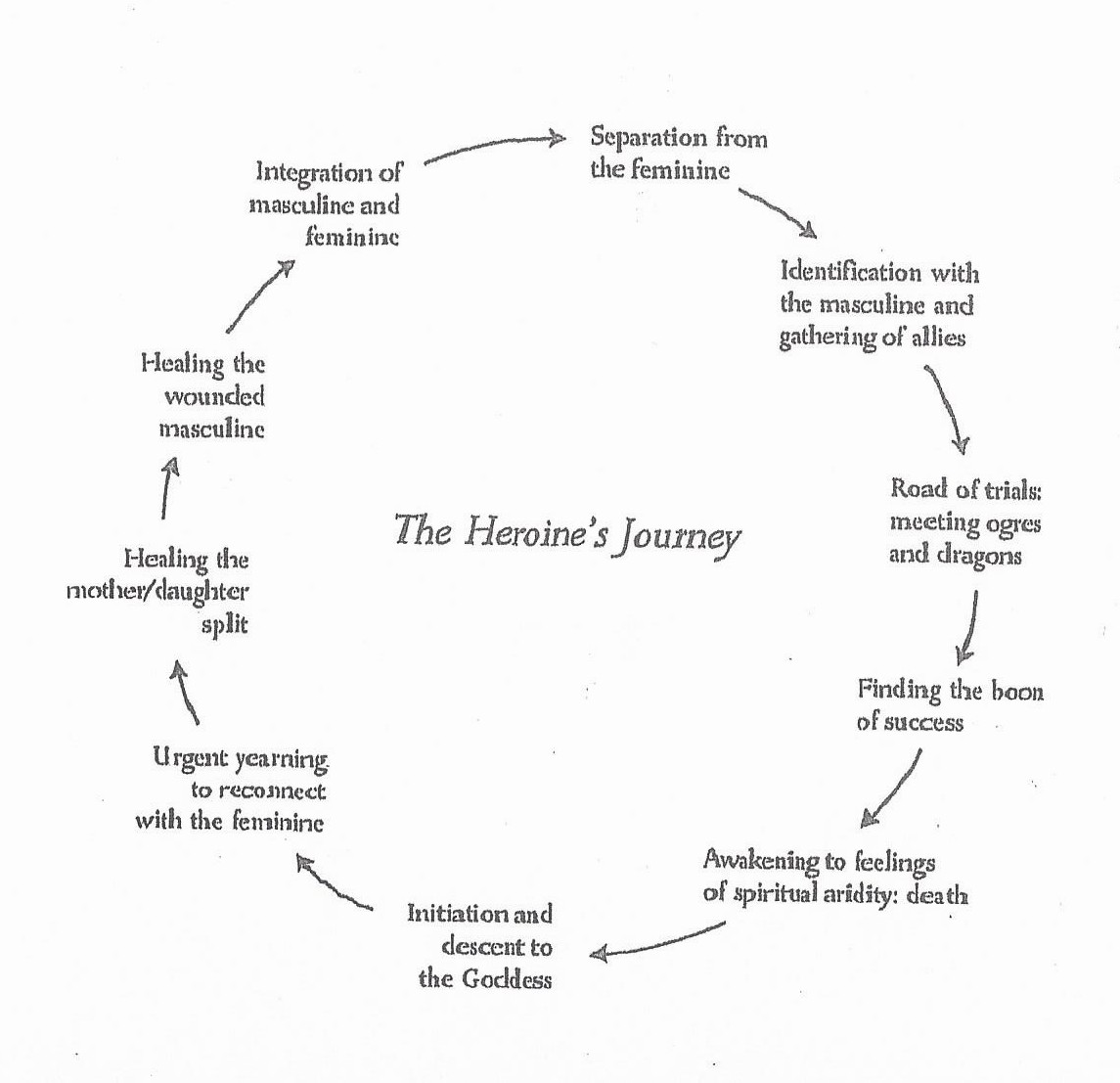





.jpg)


Theme Music
Theme music by
sirobosi frawstakwa

